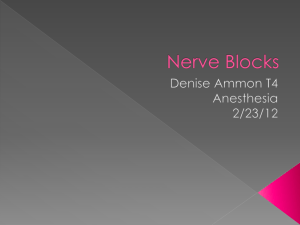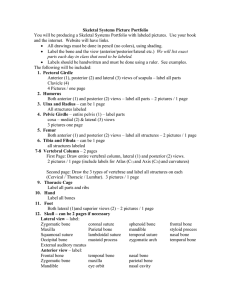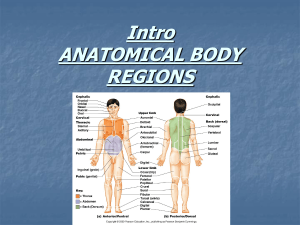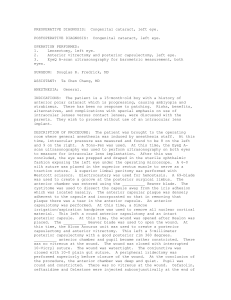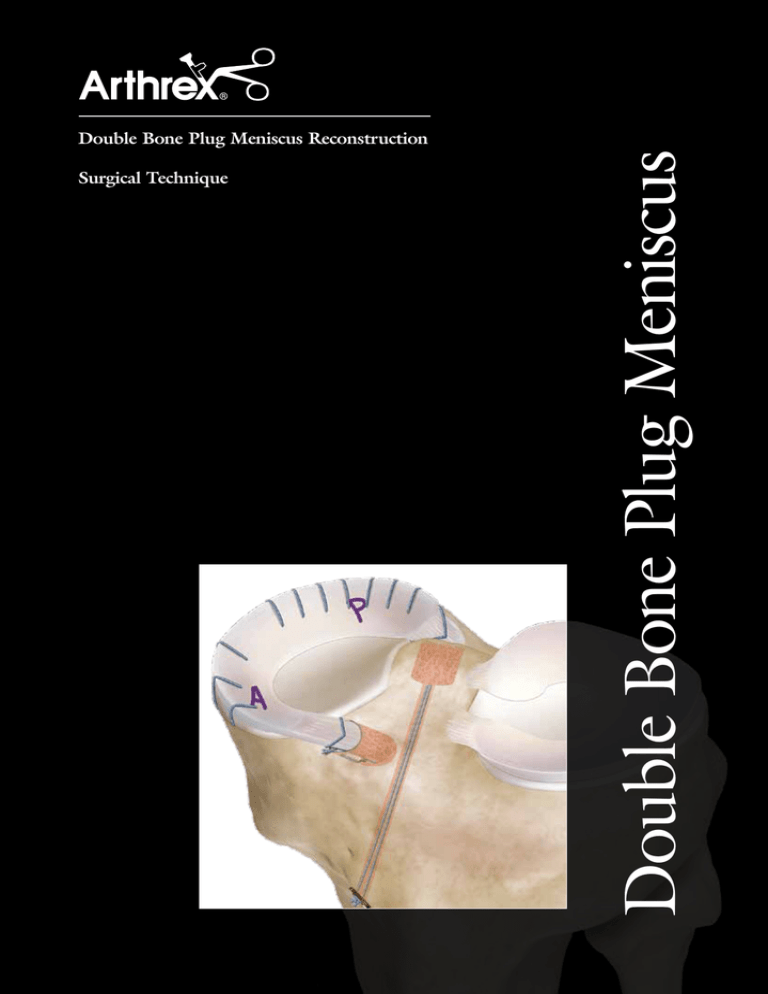
Surgical Technique
Double Bone Plug Meniscus
Double Bone Plug Meniscus Reconstruction
Low Profile Reamer
2-0 FiberWire Meniscus Repair Needles
Collared Pin & Coring Reamer Set
RetroConstruction Drill Guide Set
FlipCutter II
T
he double bone plug technique for meniscal allograft reconstruction provides a method for implanting the meniscal allograft
with rigid fixation at the horn attachments. It has been demonstrated that bony fixation at the attachment site allows for the
maintenance of functional hoop stress by the meniscal allograft.1
Graft Preparation
Allow 25 minutes to thaw and dilute the graft. Proper handling instructions are included with the graft.
Option 1 - Coring Reamer Technique
Using a Collared Pin and corresponding size Coring Reamer
1
A 2.4 mm guide pin is drilled through the
attachments of the allograft at angles that
approximate the tunnel to be drilled in
the tibia. The pin hole should be extended
through the middle of the bone bridge.
2
A Collared Pin is inserted into the bottom of
the bone bridge, so that a Coring Reamer can
be used to cut a dowel.
1. Chen M I, et al, Is it Important to Secure the Horns During Lateral
Meniscal Transplantation – A Cadaveric Study, The Journal of Arthroscopic
and Related Surgery, 1996; 12: 174-181.
Option 2 - Freehand Technique
Using a microsagittal saw and ronguers
2
1
Using a 1 mm microsagittal saw, make four
box cuts around each of the meniscal horns.
Start with the posterior cut, then the anterior cut. Create the medial and lateral cuts.
Make these cuts in the same trajectory as the
“retrodrilled” socket that will be drilled later.
Move to the medial side to make sagittal cuts,
about 10 mm posterior from the meniscus. To
release the bone plug from the donor, cut the
meniscus bone block to 10 mm in depth.
Use a freehand technique to tubularize the
bone plugs using ronguers and/or a small
saw. Prepare the plugs to have a 7 to 8 mm
posterior diameter (8 mm long), and a 9 mm
anterior diameter (10 mm long).
Suture Passing
Complete these two steps for either technique
1
2
Pass size #2 FiberLoop® through the posterior plug. A modified Kessler, or horizontal
mattress suture incorporating meniscal tissue,
is placed through the posterior attachment;
the suture is pulled back down through the
posterior plug. The anterior plug is prepared
similarly with #2 FiberWire® suture.
It can be beneficial to colorize the posterior
rim so when the graft is passed, the color acts
as a visual indicator to show that the graft
has not rotated or twisted across the joint.
Two vertical #2 FiberWire sutures are placed
in the meniscus. The first is the posterior horn
vertical suture, 5 mm from posterior bone plug.
The second is the mid-body vertical suture,
15 mm from the posterior horn suture, toward
the body of the meniscus. These provide two
permanent sutures that will be tied over the
capsule posteriorly upon implantation of the
construct.
Mark the anterior of the graft with an “A”.
Not only will this denote the anterior portion,
but also show where the last (most anterior)
stitch should be placed on the graft. Mark the
posterior of the graft with a “P”.
Posterior Tunnel Preparation
Anatomic position: The posterior horn socket will be “retrodrilled” through the anterior most portion of the residual nub of the
meniscus attachment point. It should be appropriately and anatomically juxtaposed to the PCL. This socket should be just off the
shoulder of the cartilaginous portion of the plateau and just behind the eminence medially.
The FlipCutter® is flipped
into its “retrodrilling”
position and drilled backward to a depth of 10 mm.
The rubber grommet on the
FlipCutter is used to measure this 10 mm distance.
The posterior tunnel should
be drilled 1 mm larger than
the posterior plug diameter.
1
The RetroConstruction™ guide with multi-use hook is positioned on the middle of the posterior remnant attachment at an
angle that is as perpendicular to the tibial plateau as possible. Choose a FlipCutter size that is 1 mm larger than the diameter
of the bone plugs on the donor meniscus.
The FlipCutter is drilled into the middle of the posterior remnant. The guide is removed and the cannula is tapped into
bone. After the posterior tunnel is drilled, use a Curved Rasp or shaver to remove any extraneous pieces of tissue from around
the tunnel’s superior rim. Any piece of soft tissue or cartilage will present difficulties in reducing the posterior plug. Pass a
FiberStick™ through the drilled tunnel and retrieve through the portal.
Standard inside/out suturing
technique is followed by a 4 cm
incision made on the posteriomedial aspect of the knee.
Dissect down to the medial
head of the gastrocnemius.
Make a small vertical incision
and dissect further to the
posteromedial capsule.
2
Pass a FiberStick through the FlipCutter drill guide and
retrieve the passing sutures through the medial portal.
Passing the Allograft
With direct visualization, pass a Micro SutureLasso™ through the notch in the dilated portion that was created for the passage
of the posterior horn. This SutureLasso will be used to pass a passing suture out of the posterior capsule. This passing suture
will be used to deliver the posterior horn vertical suture that was placed on the meniscal transplant construct.
With the knee in valgus position, this same technique will be used to place a second passing suture at the mid-body of the
capsule. This passing suture will be used to deliver the mid-body vertical suture that was placed on the meniscal transplant
construct.
A PassPort Button Cannula™ can aid in suture management and avoid a soft-tissue bridge between passing
sutures. It should be used in at least one anterior portal
that is ipsilateral to the transplant. This is critical so the
graft does not twist on itself during implantation. Be sure
to remove the cannula before passing the allograft, while
maintaining suture segregation.
Pass the three posterior passing sutures on the allograft
in the following order:
1. Tie the suture on the posterior horn bone plug to the passing suture that was previously placed through the posterior socket.
Note: Do not pass the meniscus at this time.
2. Pass the posterior horn passing sutures.
3. Pass the mid-body passing sutures.
1
With adequate space, pass the graft around the gutter
applying valgus stress on the knee. Begin inserting the
allograft by first passing the posterior horn. Continue
to take up any slack in the other sutures as the allograft
is inserted. Use a probe to help guide the posterior bone
plug into place. A Meniscal Probe or blunt instrument is
used to maneuver the posterior plug around the gutter,
while applying gentle traction on the posterior suture.
Visualize to ensure that the plug and the meniscus have
reduced properly. Pass the posterior horn suture through
the capsule and mid-body sutures and tie.
Securing the Anterior Plug
2
Use the 2.4 mm Drill Sleeve to protect the patella and soft tissues
to deliver a 2.4 mm pin in the correct anatomic position of the
anterior meniscus attachment. Use a Low Profile Reamer to drill
a 10 mm deep socket. Ensure that the anterior horn sutures are
safely out of the way before drilling.
3
A SwiveLock® Anchor is used to press fit the bone plug in the socket. The leading edge of the SwiveLock reduces the
bone plug. The trailing aspect of the SwiveLock is placed on the notch side of the bone plug and acts as an interference
screw to lock the anterior bone plug and meniscus in place. Alternate Technique: A through tunnel can be made with
a 2.4 mm pin to secure the anterior plug using a suture button.
Suturing the Allograft
To attach the meniscus, bring the capsule to the meniscus (instead of the meniscus to the capsule) after both bone plugs are in place.
If the posterior bone plug is placed and the meniscus is sewn to the capsule, there may not be enough graft remaining to attach
the anterior plug.
4
The anterior sutures of the meniscocapsular interface may be placed under direct visualization. Size 2-0 absorbable suture
is frequently used for this application. The arthrotomy should be closed so that the remaining sutures can be placed using
routine arthroscopic meniscal repair techniques with 2-0 FiberWire Meniscus Repair Needles. Remove the posteromedial
guide suture, as it is unlikely to be in the proper anatomic position to serve as a fixation suture.
Add vertical sutures for additional strength. Routinely, 6-8 sutures are used to secure the peripheral interface.
ORDERING INFORMATION
RetroConstruction Drill Guide Set
AR-1510S
Coring Reamer & Collared Pin Set, 9 mm Coring Reamer & Collared Pin Set, 10 mm Low Profile Reamer, 10 mm
Suture Retriever
Suture Cutter
AR-1223S
AR-1224S
AR-1410LP
AR-12540
AR-12250
DISPOSABLES:
#2 FiberLoop, straight
FiberStick, #2 FiberWire, 50”
TigerStick, #2 TigerWire, 50”
#2 FiberWire, 38” w/Tapered Needle
Micro SutureLasso, minor bend
FlipCutter IIs, 6 mm – 13 mm
Suture Button, 3.5 mm Suture Button, 12 mm round
AR-7234
AR-7209
AR-7209T
AR-7200
AR-8701
AR-1204AF-60 – 130
AR-8920
AR-8922
2-0 FiberWire Meniscus Repair Needles
Protector Meniscus Surturing Set
Meniscal Repair Joystick System
AR-7223
AR-4060S
AR-4007JS
BioComposite SwiveLock, 3.5 mm
Drill for 3.5 mm BioComposite SwiveLock
AR-2325BCC
AR-2325D
PassPort Button Cannulas, 6 mm x 2 – 5 cm
PassPort Button Cannulas, 8 mm x 2 – 5 cm
PassPort Button Cannulas, 10 mm x 2 – 5 cm
AR-6592-06-20 – 50
AR-6592-08-20 – 50
AR-6592-10-20 – 50
This description of technique is provided as an educational tool and clinical aid to assist properly licensed medical professionals
in the usage of specific Arthrex products. As part of this professional usage, the medical professional must use
their professional judgment in making any final determinations in product usage and technique.
In doing so, the medical professional should rely on their own training and experience and should conduct
a thorough review of pertinent medical literature and the product’s Directions For Use.
U.S. PATENT NO. 6,716,234; 7,147,651 and PATENT PENDING
2012, Arthrex Inc. All rights reserved. LT1-0106-EN_A
©



